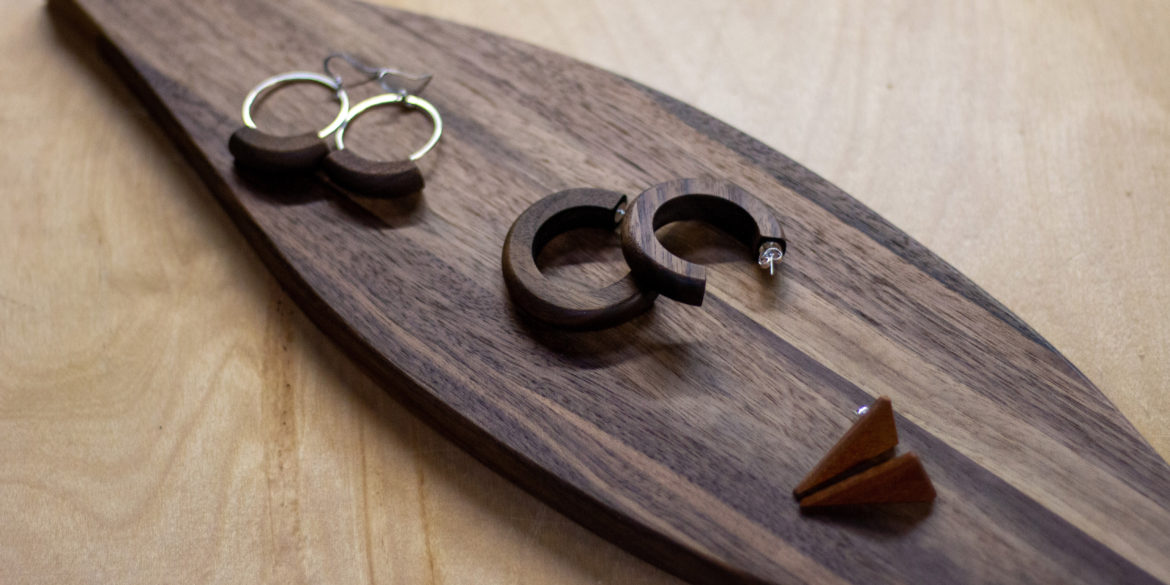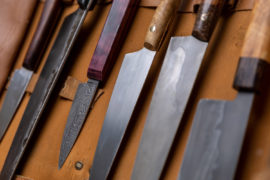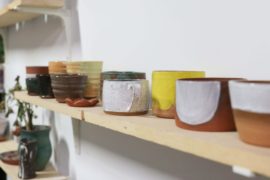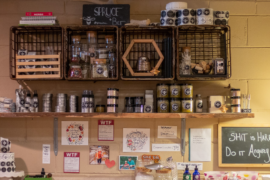Who said lumberjacks and woodworkers have to be men? Alyssa Imran is carving her way onto the local scene, literally and figuratively. Six years ago, she started woodworking, and a year ago, she found her passion and love for sculpting art out of timber. PATTERN had the opportunity to sit down and talk with Imran about her love for the craft.
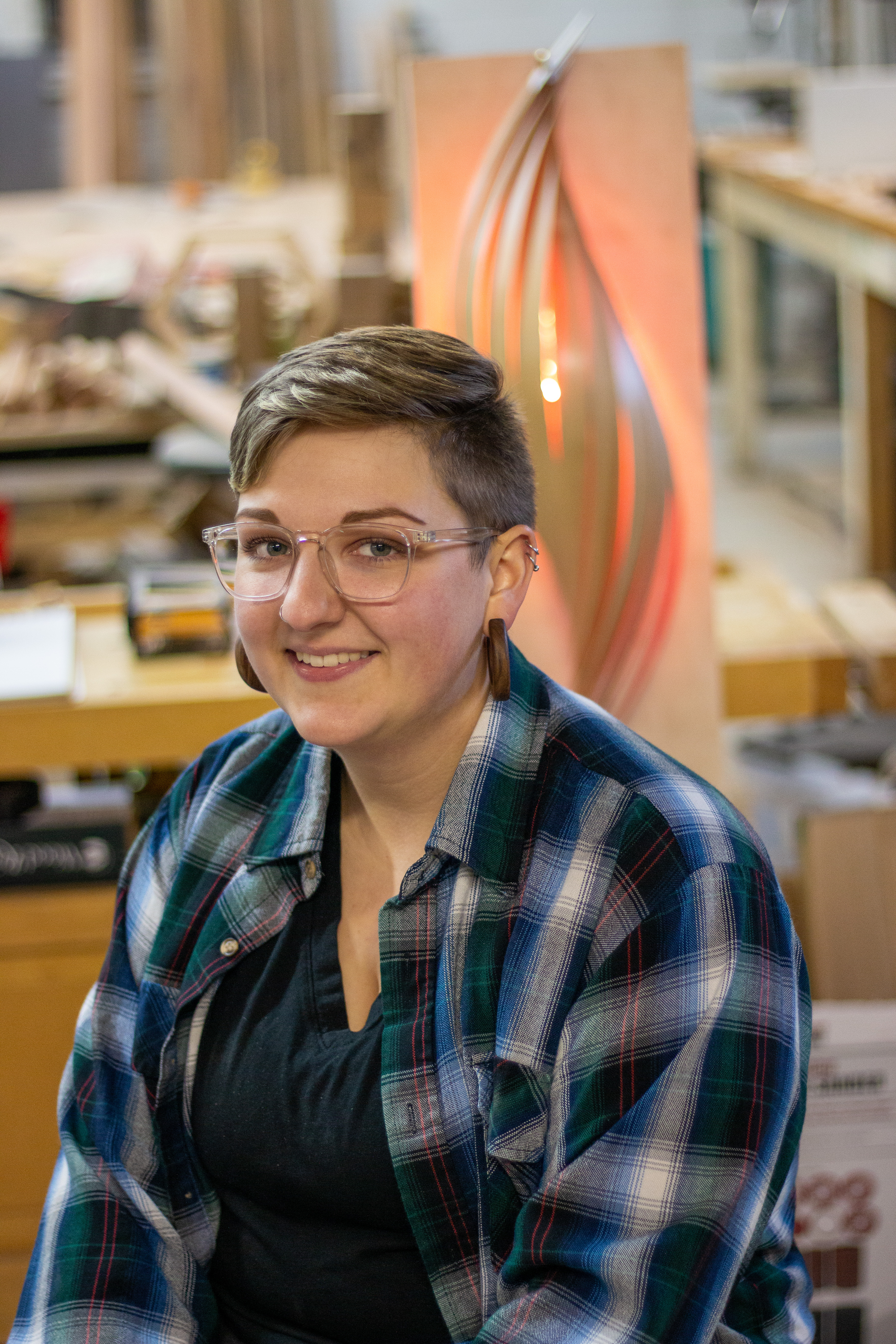
What piqued your initial interest in designing your product(s)?
I fell in love with woodworking and the idea of gallery furniture when I was in undergrad. I immediately changed my major to furniture design and made a point to learn as much as I could about fine woodworking while in school. My work varies from functional furniture pieces to more sculptural installation work. My time spent at Herron School of Art and Design is fully responsible for my interest in woodworking.
What principles do you use when designing?
When designing, I try to focus on the movement and flow of the piece. I want the eyes of viewers to be guided around the form and back again. I also like to incorporate pops of color to create contrast with the natural tones of the wood.
Who and/or what influences your design style? How would you describe your design aesthetics and values?
I draw a lot of my formal inspiration from plant life and foliage.
I enjoy the idea of using this organic material (wood) and shaping it into something else that may also appear in nature like leaves, flowers, etc.; organic shapes, repetition, and pattern are all elements you’ll find incorporated within my work. My designs are usually more minimal with little pops of color or smaller metal detail work.
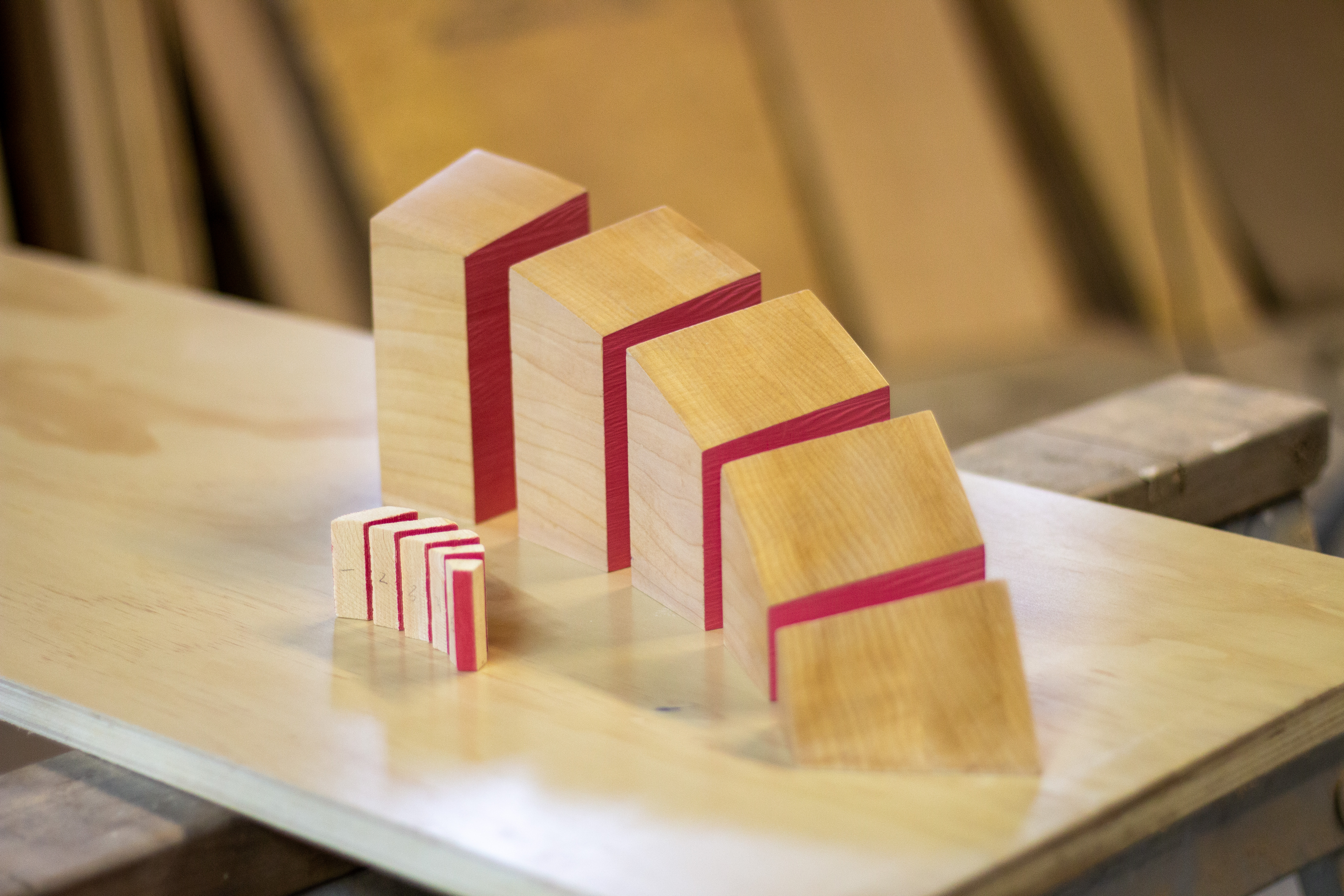
What comes first for you, the design materials or the design concept
The material almost always come first for me. I almost exclusively use wood in my work. Sometimes I throw in some smaller metal components for detail, but wood is usually my starting point.
Could you describe the process of creating a piece – from conception to finish? The creative process as well as material selection and labor process, too?
When starting a piece, I will usually do a few pages of thumbnail sketches to test out certain design details I have in mind. Then I pick two or three of those thumbnails and either draw them larger with more detail or make a scale model using paper or cardboard. Depending on the piece, I may build a prototype from 2×4’s to visualize the scale of components. Then comes the making. First, I make a cut list with the dimensions of each piece that need to be milled and cut. After cutting the pieces, then I will assemble them. After assembling, I will sand them down. And lastly, I will put some sort of finish on the piece to make it durable and bring out the natural tones in the wood grain.
What is your favorite tool, and why?
I would have to say that my favorite tool is the band saw because it’s so versatile. You can turn a straight piece of wood into a circle with one cut. Or you could cut your own veneer. I use my band saw to do a majority of the shaping throughout my work.
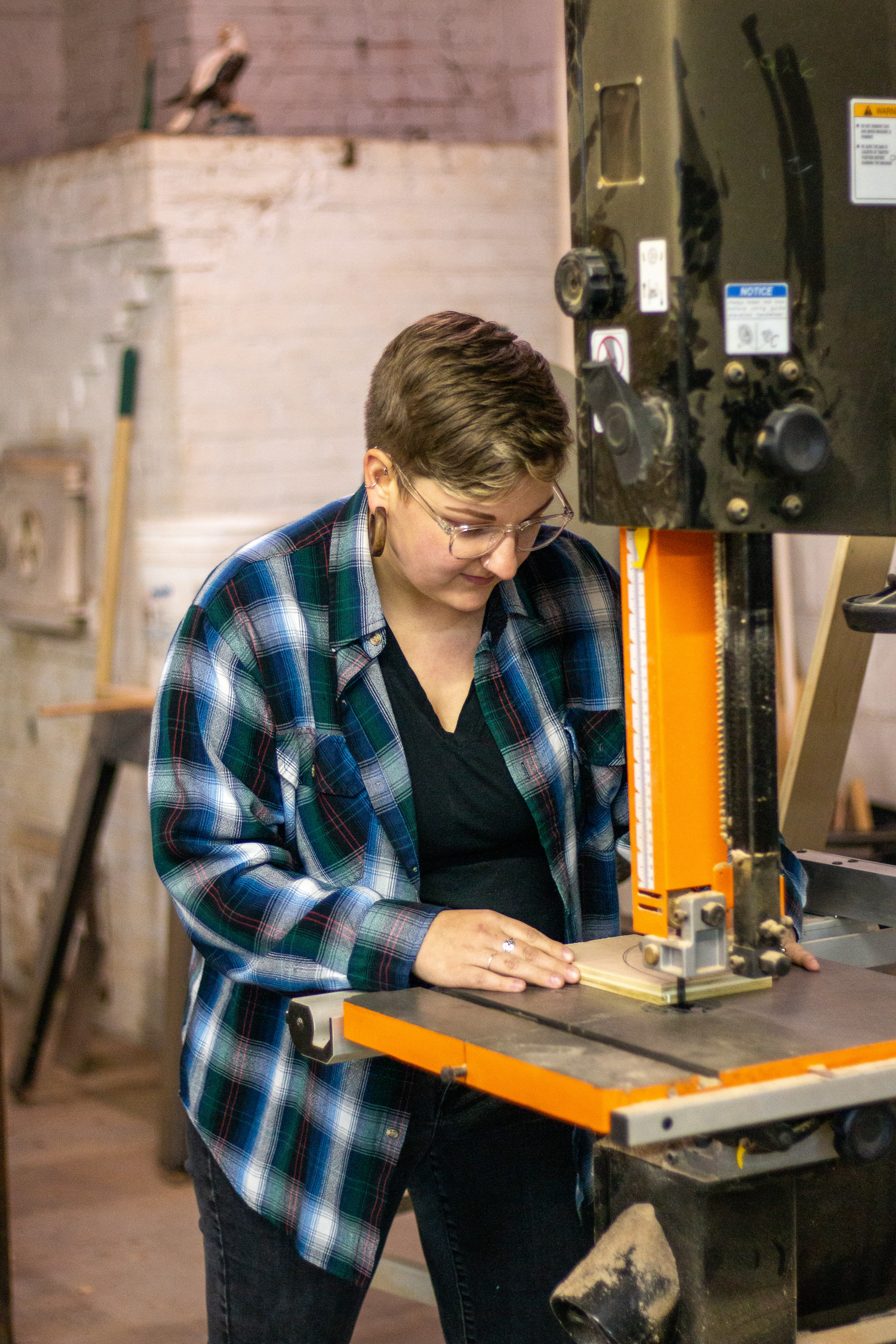
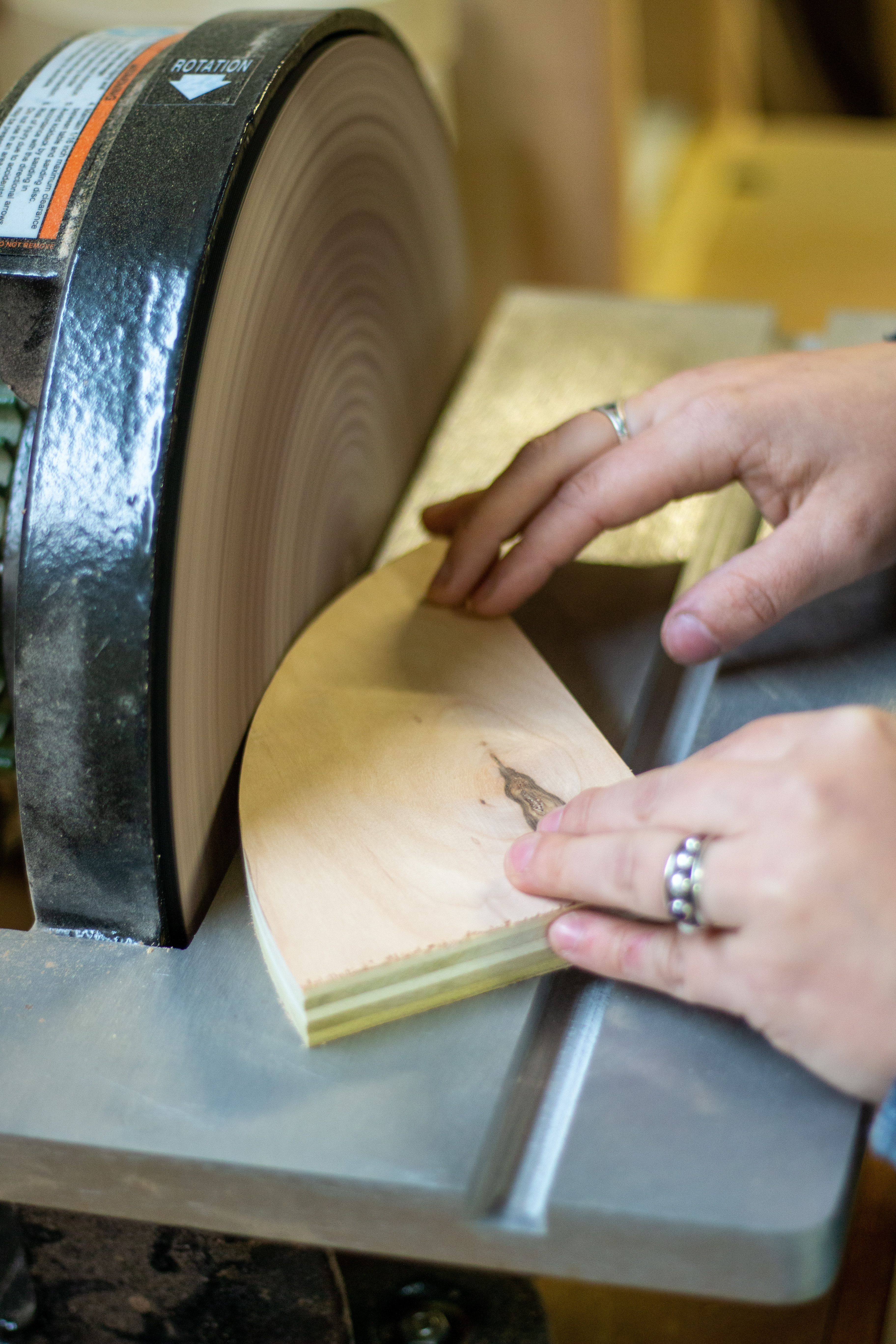
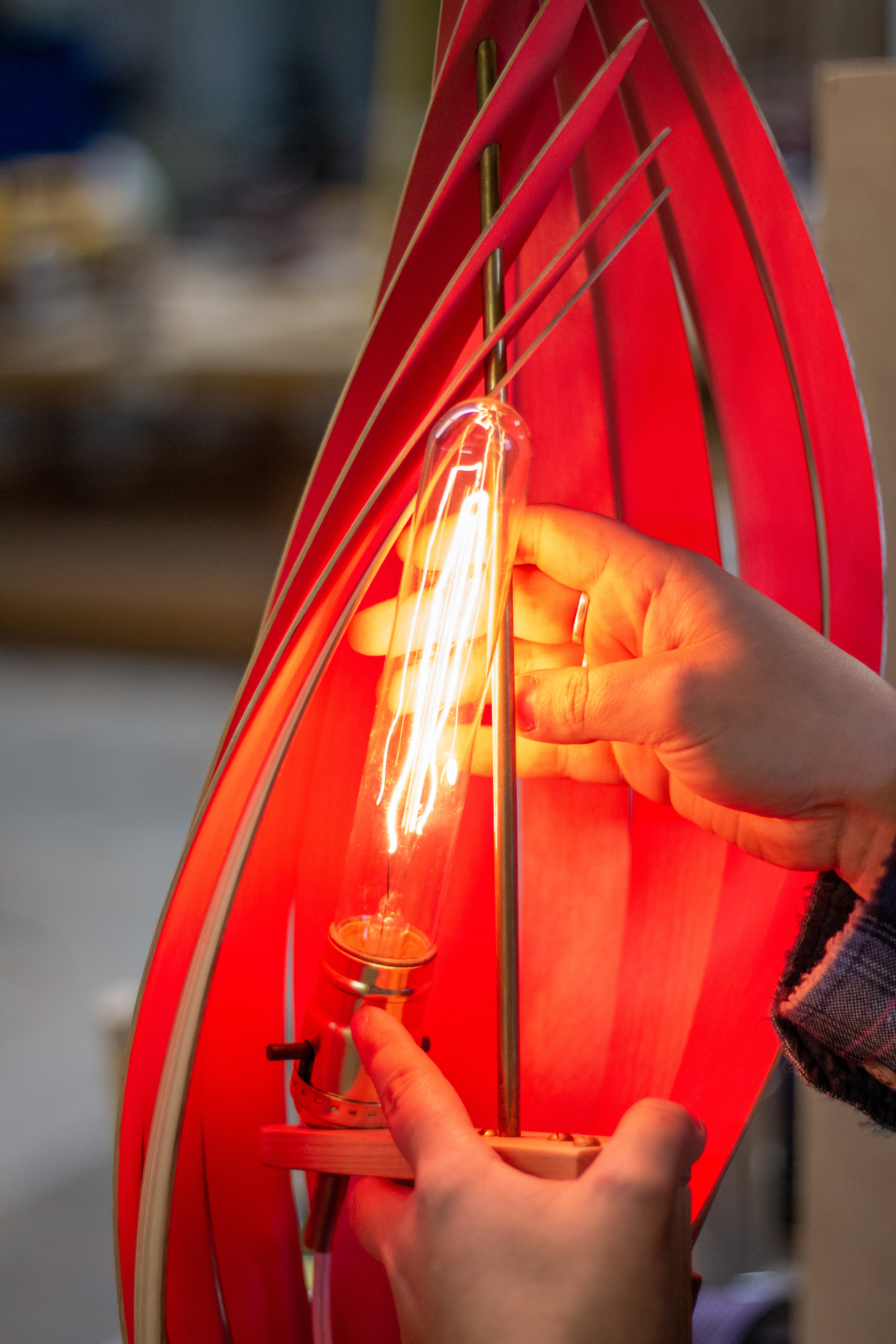
Describe a piece you’ve created that you are most proud of. What was special about it?
I’d have to say the piece I’m the proudest of is a wall lamp titled “Unfurling.” Not only is it a functional lamp, but also a self-portrait. I used the process of steam bending to fabricate strips that spiral around a brass rod. The inside of the slats are painted pink. So when light shines through the pieces, it creates a pink glow around the wall.
Describe the commissioning process. What are the best and worst aspects of doing commissions?
The best thing about doing commissions is delivering the piece to the customer. Seeing a client’s eyes light up because you have crafted exactly what they wanted is so rewarding. I’d have to say the worst aspect of doing commission work is when you have to make compromises to the customer’s design due to budgeting or for structural reasons.
What advice would you give to aspiring designers like yourself?
Understand that not every idea you have is going to be a masterpiece. Don’t be afraid of failure! You’re going to learn something new from every project, even if you have to make it twice or three times to get it right.
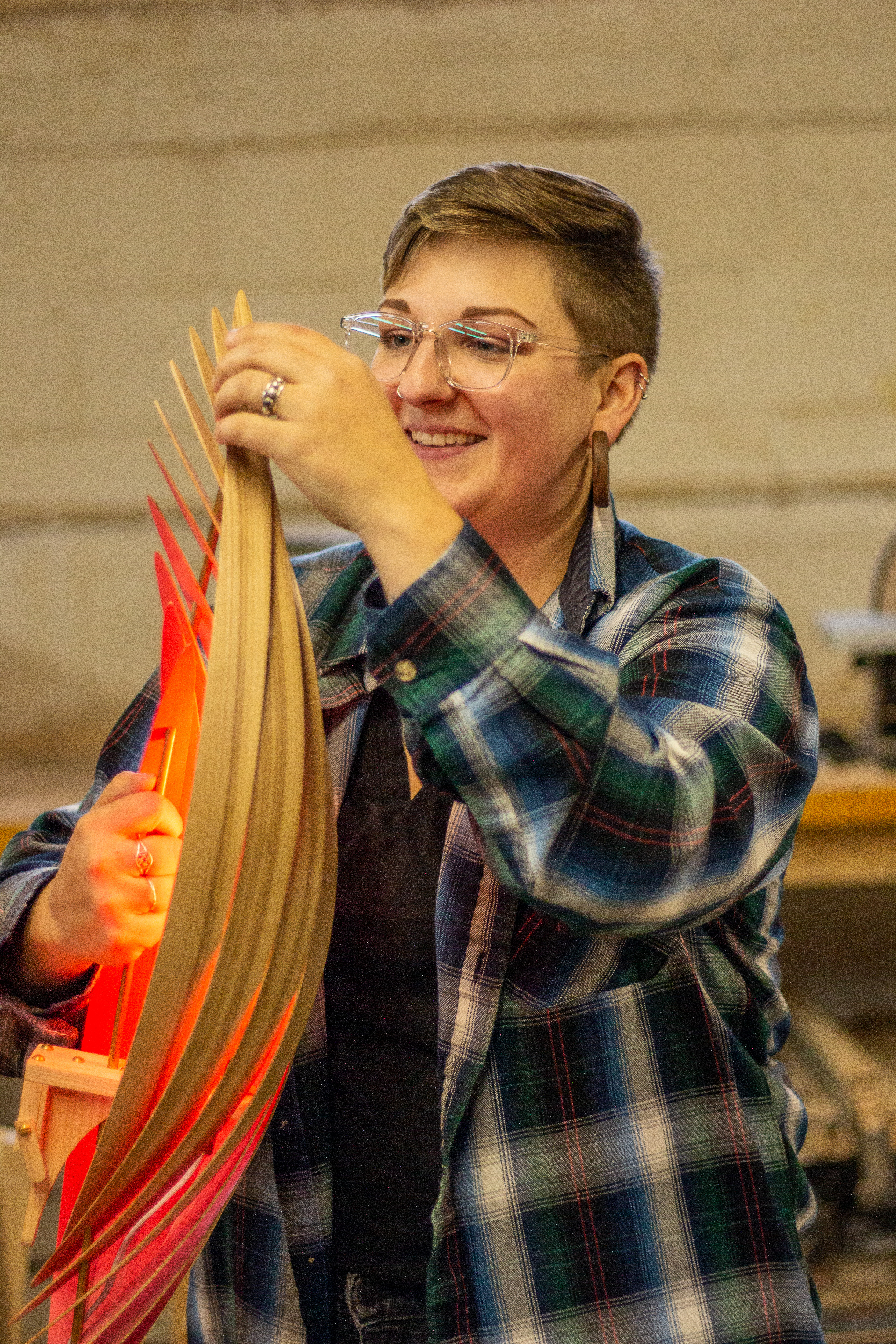
What is one thing that the creative/design community can do in Indianapolis to help grow an audience for custom or hand-crafted work?
Local artists are gaining more and more exposure through social media, and I think the best thing we can do right now is promoting ourselves and other makers as much as possible. I also think the community is going in the right direction with the volume of recent pop-up shops and makers markets.
Dream commission/client?
I think my dream commission would be having someone tell me they have a huge space in their home or gallery that they want me to occupy with an installation piece. Steam bending is a process I really enjoy when fabricating my work. I’ve always dreamed of fabricating a large scale steam-bent installation incorporating hundreds or even thousands of steam-bent wooden parts. I would put them all over the walls, floor, and even the ceiling!
What makes your work different from anyone else’s?
I think that my work stands out from other artists who work in wood because I focus my attention on the various ways that I can manipulate the material from its original form via carving, steam bending, etc.
When people think about wood as a material, I feel like they expect it to be square and flat. When I make my work, I want people to look at it and go, ‘Wow. How did she even do that?’
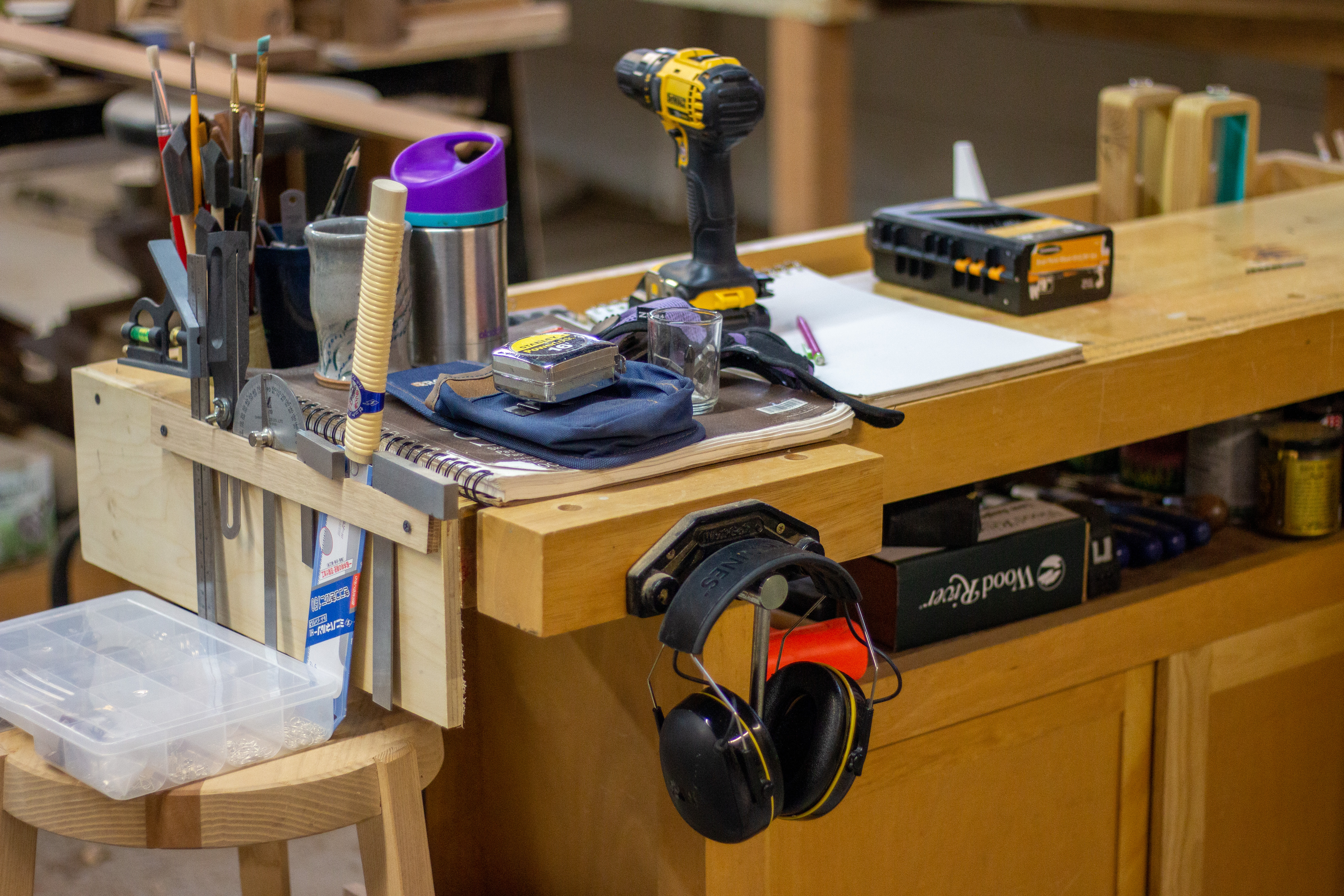
What’s your most rewarding memory in your business?
I think the most rewarding memories I have as a woodworker are when I have been teaching others about tools and techniques. The pure joy on a student’s face when something finally clicks is priceless.
Is there any maker you would recommend to be highlighted for this series?
Alexa Adamson and Andi Merrill of Rumple Willow Ceramics. They are lovely makers and lovely humans.

